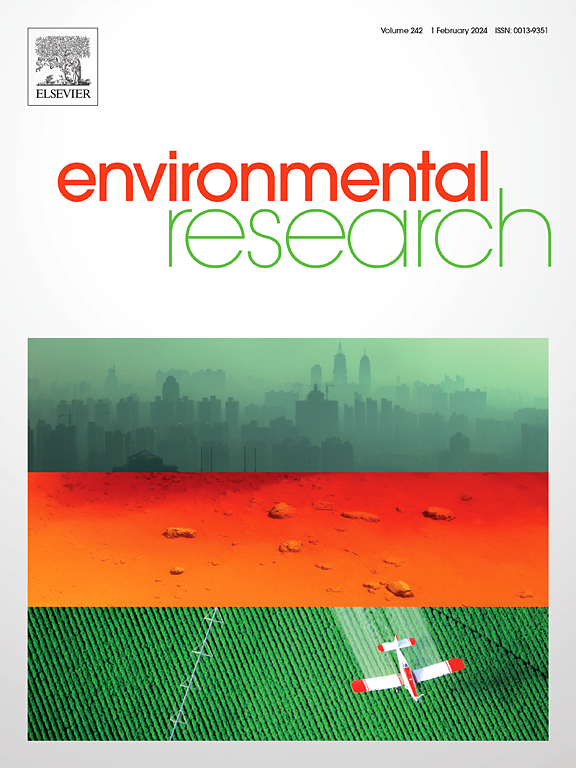Effects of prenatal vanadium exposure on neurodevelopment in early childhood and identification of critical window
IF 7.7
2区 环境科学与生态学
Q1 ENVIRONMENTAL SCIENCES
引用次数: 0
Abstract
The increased environmental vanadium exposure levels have drawn widespread attention to its health risks. However, the specific impacts of vanadium exposure during pregnancy on child neurodevelopment are unknown. Prenatal vanadium exposure was assessed using 3777 urine samples from 1259 mothers over three stages of pregnancy, and child neurodevelopment at 2 years old was evaluated using the Bayley Scales of Infant Development to get mental development index (MDI) and psychomotor development index (PDI) scores. In boys, versus with the first tertile of vanadium, MDI scores decreased by 5.08 points [95 % Confidence Interval (CI): −9.42, −0.74], 4.81 points (95 % CI: −9.52, −0.10) in the second and third tertiles, respectively; and the OR of mental developmental delay (MDD) rose 1.97 times (95 % CI: 1.06, 3.67) in the third tertile. The trimester-specific analysis found that the associations were most pronounced in the third trimester [–5.56 (95 % CI: −9.81, −1.31) and −6.29 (95 % CI: −10.7, −1.89) for MDI; OR = 1.93 (95 % CI: 1.03, 3.60) and OR = 2.50 (95 % CI: 1.34, 4.66) for MDD risk in the second and third tertiles of vanadium, respectively] in boys. Overall, prenatal vanadium exposure may have adverse impacts on child neurodevelopment, particularly among boys, and the third trimester may be a critical window of the effect.

求助全文
约1分钟内获得全文
求助全文
来源期刊

Environmental Research
环境科学-公共卫生、环境卫生与职业卫生
CiteScore
12.60
自引率
8.40%
发文量
2480
审稿时长
4.7 months
期刊介绍:
The Environmental Research journal presents a broad range of interdisciplinary research, focused on addressing worldwide environmental concerns and featuring innovative findings. Our publication strives to explore relevant anthropogenic issues across various environmental sectors, showcasing practical applications in real-life settings.
 求助内容:
求助内容: 应助结果提醒方式:
应助结果提醒方式:


